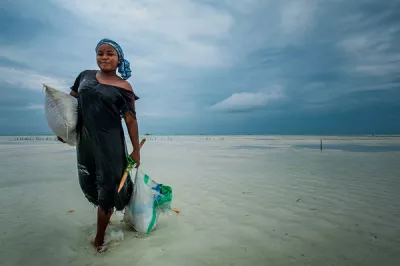Expanding the Funding Horizon for Financial Access
The MIX collects data on over 2,200 microfinance institutions around the world with a combined balance sheet of $135 billion. Since CGAP has been collecting data on cross-border funding flows, we have seen consistent growth in both public and private funding for microfinance, with private capital growing at consistently higher growth rates. The CGAP latest funder survey estimates at least $25 billion in commitments as of December 2011 from public and private funders. There is broad recognition within the development community that donors have contributed significantly to building these microfinance institutions that serve the poor around the world. Donors have been instrumental in proving the “MFI business model” which showed that financial services to low income clients can be a profitable business. MFIs now attract local capital and commercial cross-border capital –MIX data shows that in 2010, 60% of debt funding – the second largest source of funds for MFIs after deposits – comes from local sources. CGAP estimates that globally two-thirds of the funding structure of retail providers comes from local sources.
But isn’t it time donors updated their investment portfolio to reflect new thinking and the new reality on the ground?
Today we recognize that it takes a broader ecosystem of providers to deliver the diverse set of services that the poor need. Strategies that remain focused on only one of these providers – MFIs – are missing the bigger picture.
Evidence from CGAP’s funder survey shows that public donor funding remains focused on refinancing for retail MFIs -- more than 90% of all donor commitments. One-third of cross-border funding goes to only 10 countries (Bangladesh, Egypt, India, Indonesia, Mexico, Morocco, Peru, Philippines, Russia, and Turkey). DFIs, which are the largest cross-border funders of microfinance, channel 23% of their funding through Microfinance Investment Vehicles (MIVs), but also provide direct financing. The true level of concentration is even higher, as MIVs and DFIs are both investing in the same institutions.
To reach universal financial inclusion and to make sure financial services to the poor are responsible, systemic change has to happen that goes beyond institution building. This blog series will examine the market development approach and explore what such an approach means when applied to the financial sector. We will hear from donors who have embedded this market development philosophy into some of their financial services programs and those who have used it for their private sector work, but have not yet applied it to financial services and their reasons why. We will hear from those who have been working on how to measure market development outcomes and how donors can address their accountability needs when attribution is so difficult to prove.
Microfinance is widely recognized as an important development success story precisely because it has succeeded in leveraging the private sector to address development outcomes. That has important implications for donors, who need to rethink their approaches as the market has evolved, to identify and facilitate market development initiatives needed for the provision of financial services to the poor at scale. We hope this blog series provides some ideas about how this can be done. And we invite you to share your experience and ideas.
----------------The author leads the donors and investors team at CGAP.



Comments
What about west Africa, where
What about west Africa, where one finds extreme poverty?
Add new comment